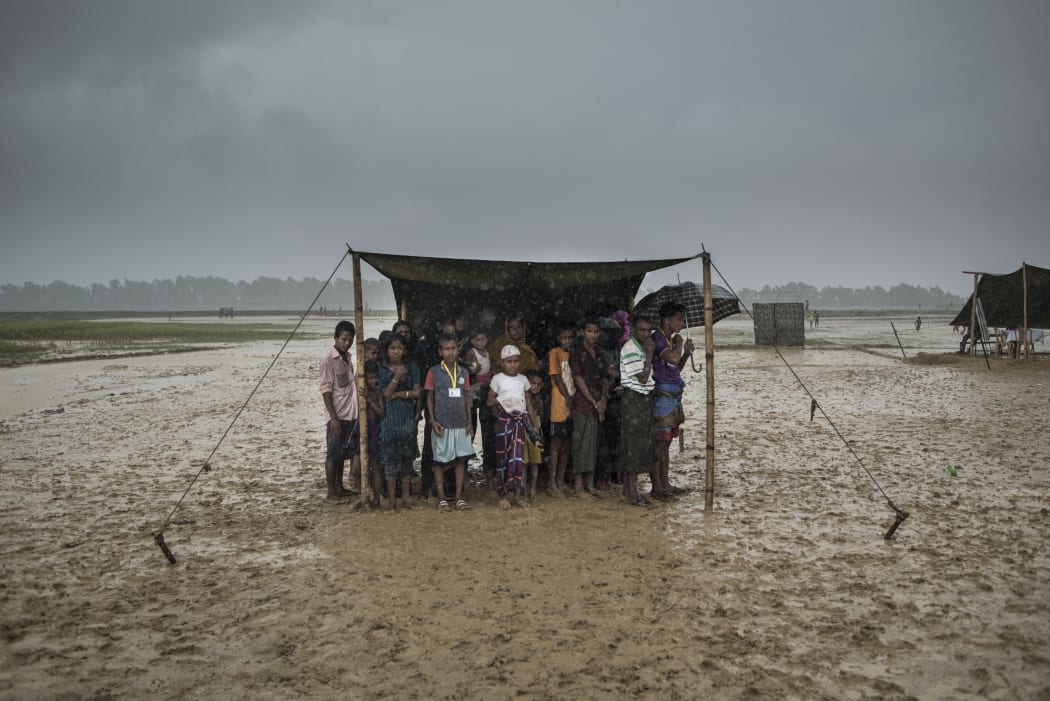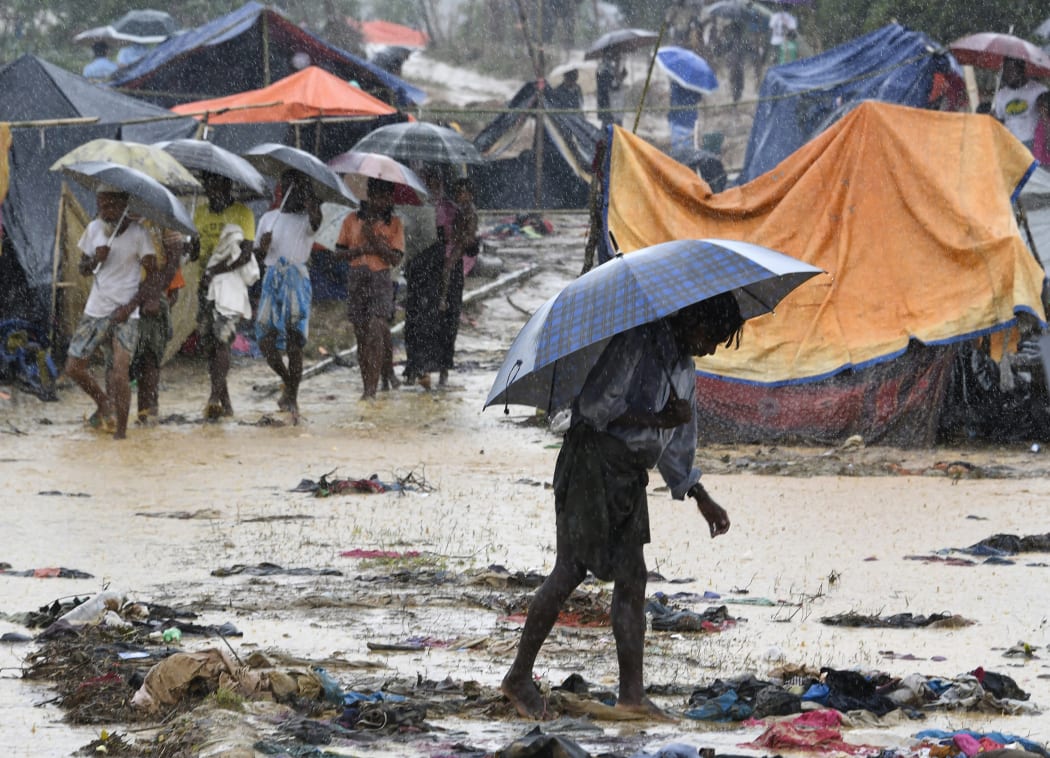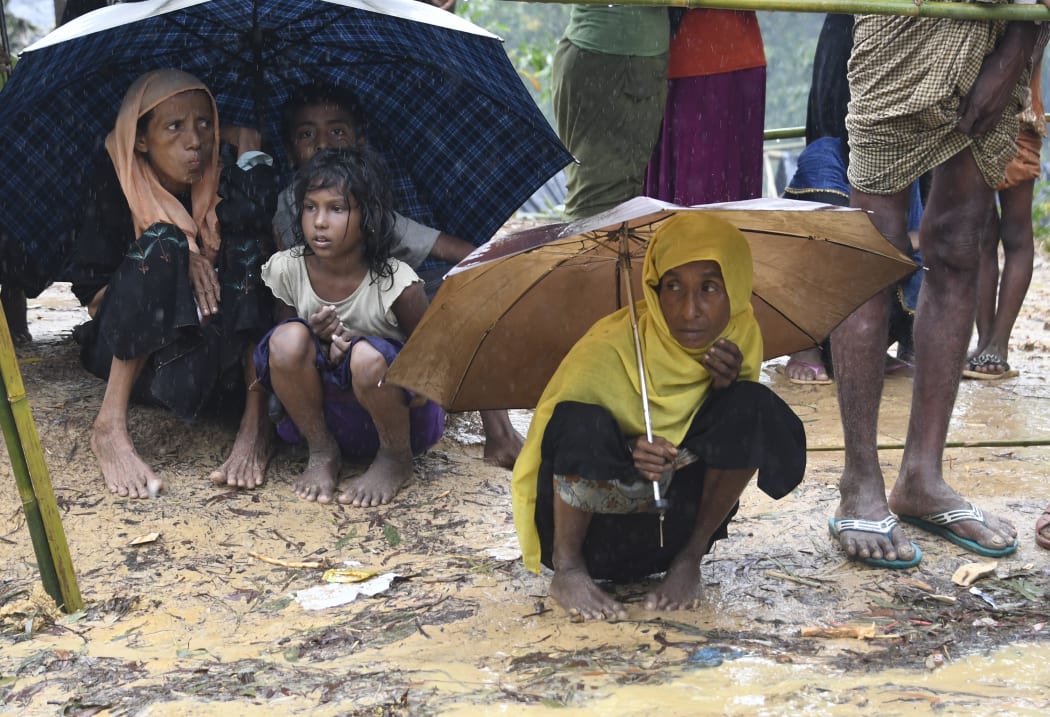In the Rohingya refugee camps of southern Bangladesh, where flimsy bamboo shelters sprawl across the steep hillsides and flood prone valleys, there has been a desperate effort to make ready for the coming cyclone and monsoon season. But the almost 900,000 refugees here remain very vulnerable.

Photo: AFP
The BBC's Justin Rowlatt has spent weeks in the camps since the refugee crisis began in August last year.
Here's his summary of who the Rohingya refugees are, how well prepared the world's largest and most densely populated refugee settlement is for the coming storms and when - if ever - the refugees will be able to return to their homes.
The Rohingya are a more than a million-strong population of Muslims from majority-Buddhist Myanmar, the country formerly known as Burma.
They have been described as "the world's most persecuted minority". The government of Myanmar stripped them of citizenship in the 1980s and has imposed many restrictions on them since then. It has also subjected them to periodic waves of terrible violence.
Even the country's de facto leader, Aung San Su Kyi, refuses to use the term Rohingya. In official speeches she describes them as "Bengalis", suggesting that the Nobel peace laureate, like many Burmese, regards them as illegal immigrants from Bangladesh.
The Rohingya, meanwhile, insist they are native to Myanmar.
The UN estimates that just under 700,000 Rohingya fled their homes in the western coastal state of Rakhine to Bangladesh last year after a vicious military crackdown which began in late August after deadly attacks by Rohingya militants on police posts.
Hundreds of Rohingya villages were burnt to the ground and there was widespread rape and murder. The head of the UN's watchdog on human rights has said the possibility that Myanmar's actions against the Rohingya could be genocide cannot be ruled out.
This latest wave of refugees joined some 200,000 Rohingya who were already in Bangladesh, having fled their homes following earlier waves of persecution.
Bangladesh suffers terrible cyclonic storms and some of the most intense monsoon rains on earth.
Cox's Bazar, where the refugee camps are, has one of the highest rainfall totals in the entire country.
The monsoon season begins in earnest in May and it is expect to bring yet more destruction and disease to the camps.
The exodus of Rohingya was unexpected. The refugees built shelters wherever they could, stripping the vegetation from muddy hills and building flimsy shelters on earth platforms they dug out of the slopes of the low hills the government allocated for them.

Photo: AFP
Most of these homes are little more than tents which could easily blow away in the high winds that are expected in the coming weeks. They are also susceptible to landslides and flash floods.
A UN guide to strengthening buildings in the camps is brutally clear about the risks, saying: "It is very unlikely that any bamboo community shelter will survive a cyclone."
Factor in the risk of disease and there could be a "massive loss of life", the World Health Organization has warned.
A huge amount of work has been done to help the Rohingya people. There are classes to train the refugees how to strengthen their bamboo shelters. Hillsides and paths have been bolstered with sandbags and there are new roads and bridges to make the transport network more resilient.
New culverts and drainage channels have been dug in to try to limit flooding, while emergency depots have been set up to store food and equipment in case areas of the camps are completely cut off by flood water or as a result of storm damage.
At the same time 50 hectares of new land is being cleared and the hills levelled to create stable ground for the 15,000 refugees most vulnerable to monsoon damage.
The camps cannot be evacuated if a cyclone strikes. Bangladesh does have a good early warning system for cyclones but, say UN agencies, there are no plans to evacuate the refugees. There are just too many people and nowhere safe for them to go.
Bangladesh has been building roads, sea defences and shelters on Bhasan Char, a silt island that emerged from the muddy waters of the Bay of Bengal less than two decades ago.

Photo: AFP
In April the Bangladeshi Prime Minister, Sheikh Hasina, confirmed that her government planned to move 100,000 Rohingya refugees to the low-lying island. "The camps are unhealthy," she said. "We have prepared a better place for them to live, with houses and shelters where they can earn a living."
The UN and aid agencies remain very anxious about the plan. They fear that any refugees relocated to Bhasan Char would be isolated, trapped at the mercy of cyclones, floods and human traffickers.
Most refugees in the camps said they want to return to their homes in Myanmar.
A repatriation agreement was signed between Bangladesh and Myanmar in November last year. Almost six months on and not a single refugee has yet returned home - with a claim by Myanmar that it had repatriated a family of five dismissed by Bangladesh as a "farce".
Bangladesh said the fault lies with Myanmar. "Myanmar says they are ready to take back the Rohingya but they are not taking the initiative," Sheikh Hasina has said.
Myanmar, on its part, said it has been verifying refugees for repatriation, but Bangladesh has not provided all the information required.
It said it will allow UN agencies to help with the return of some of the refugees, and that it will ensure that refugees can come back "without fear".
A few refugees may be repatriated in the coming months but the truth is that no-one expects the bulk of the Rohingya in Bangladesh to go back to Myanmar anytime soon.
An assessment of the mental health needs of the populations of the camps makes depressing reading.
Only a third of respondents felt safe in the camps and two-thirds of adults said they experienced constant grief for lost family members and their previous lives.
Three-quarters of adults said they felt sad all the time.
- BBC

